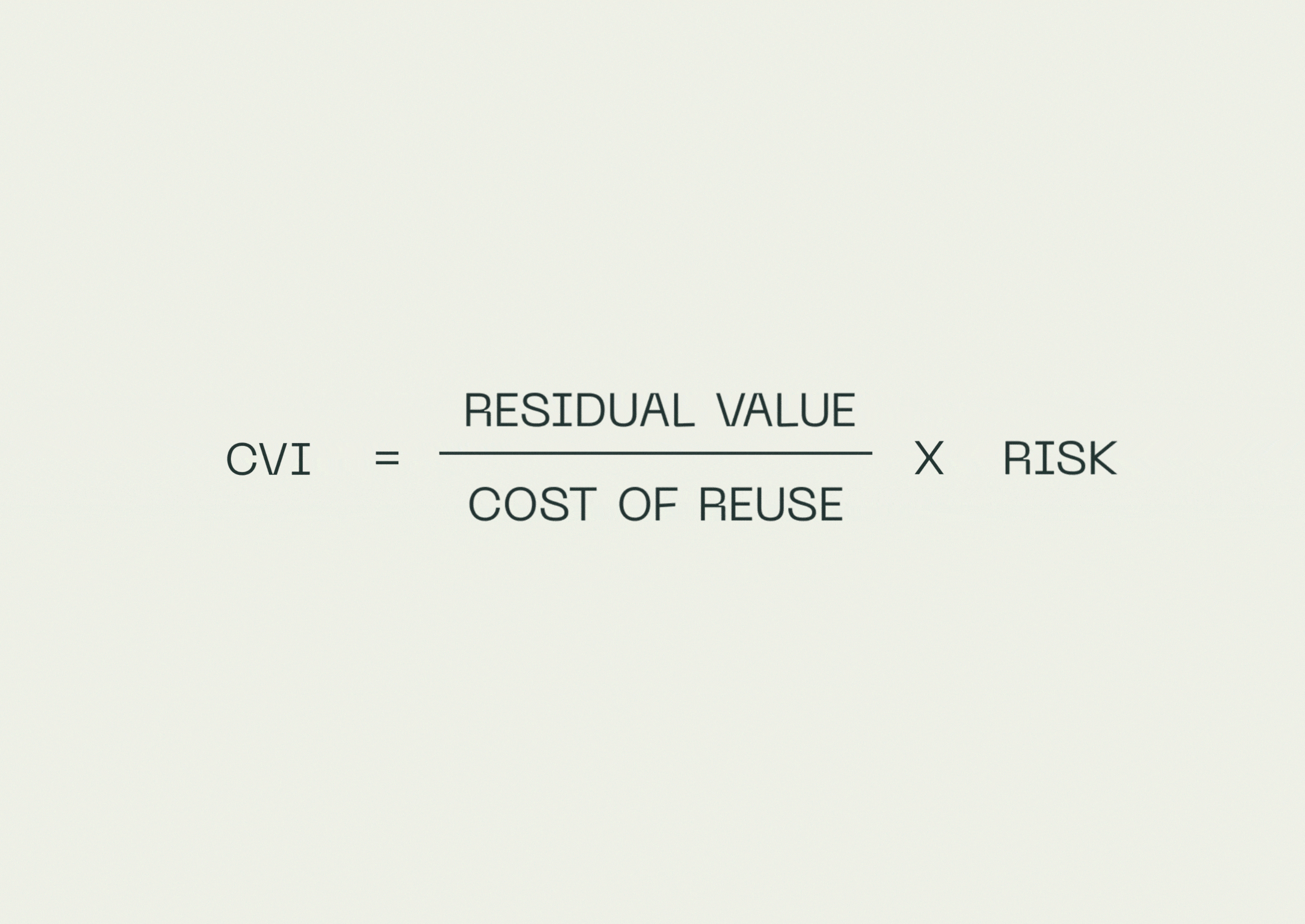
Understanding your Circular Potential
The 3 components of the circular value:
RESIDUAL VALUE
What's the value of the item after a use cycle?
Residual value, often referred to as salvage value, is the estimated worth of an asset at the end of its useful life. It represents the asset's remaining value after accounting for depreciation, wear and tear, and obsolescence.
COST OF REUSE
How much does it cost to reuse the product or material?
The cost of reuse refers to the expenses associated with reusing products, materials, or components instead of disposing of them and acquiring new ones.
RISKS
What are the risks?
The risks take all uncertainty into account that might affect the residal value or the cost of reuse.

Potential outcomes*
≈ 0
≈ 1
≈ 3
≈ 10+
CVI =
*This is an indicative scale, not an exact science.

The R - Ladder
To maximize circular value, we encourage business models that operate higher up the R-ladder. The higher a strategy ranks on the ladder, the more value is preserved — economically, environmentally, and socially.
This pyramid illustrates different strategies, from refuse and reduce to recycle and recover. Models that minimize resource use or keep materials circulating for longer contribute to a higher Circular Value Index (CVI).
By prioritizing strategies at the top of the ladder, organizations build more resilient and future-proof systems.
